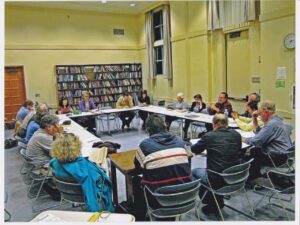Last month we picked some world-class snaps from the London Natural History Museum’s Wildlife Photographer Of The Year ‘commended’ list.
If you missed those, pop past here, but now we know who has come out tops.
Marsel van Oosten has won the prestigious award for that image above, dubbed “The Golden Couple”.
This description of that photo comes via National Geographic:
The striking photo of a pair of endangered golden snub-nosed monkeys in central China’s Qin Ling Mountains is both a traditional portrait, in one sense, and magical in another, said Roz Kidman Coz, the chair of the judging panel, in a press release. “It is a symbolic reminder of the beauty of nature and how impoverished we are becoming as nature is diminished,” she says. “It is an artwork worthy of hanging in any gallery in the world.”
Golden snub-nosed monkeys only live in this part of China, and their numbers are decreasing primarily because of habitat loss from commercial logging and firewood collection.
A worthy winner, indeed.
Let’s have a look at a few other snaps that took top spot in the various categories:

Cristobal Serrano’s photo of crabeater seals on a small ice floe in Antarctica took the top spot in the “animals in their environment” category. The photographer had to wait in a rubber dinghy alongside the floe until the ocean quieted enough for him to launch his drone and get the shot.
Better than getting pissed up and flying it on the beach with your pals. Take note, Clifton boets.

David Herasimtschuk came out on top in the “amphibians and reptiles” category with his image of a northern water snake in the the jaws of a giant salamander called a hellbender. When the snake tightened its body against the salamander’s head, Herasimtschuk recounted, the hellbender tried to reposition its bite, inadvertently allowing the snake to escape.
The hellbender is my new favourite amphibian. It may even be my spirit animal.

Thomas Peschak, a National Geographic photographer, took the top spot in the “birds” category with a photo of a ground finch feeding on the blood of a Nazca booby on Wolf Island, in the northern Galápagos. The finch’s diet normally consists of seeds and insects, which aren’t in regular supply here on the islands, so it makes up for it by feeding on the boobies’ blood. Perhaps most surprisingly, Peschak says the boobies don’t seem to mind.
Desperate times call for desperate measures.

“Night flight”—an image of flying fish off of Palm Beach in Florida by Michael Patrick O’Neill—took the “underwater” category. In the daytime, these fish are quick to flee from danger, but at night, they move more slowly, feeding on plankton, which allowed O’Neill to get closer.

Jan van der Greef spent two and a half days posted at a flower at his hotel in southern Peru to get the shot that earned him the “black and white” category. As the eastern mountaineer hummingbird drank the nectar, he waited patiently until the bird moved behind a spike and closed its tail, creating a cross.

Javier Aznar González de Rueda took home the portfolio award for a collection of six images. They include this photo of a treehopper guarding her family in Ecuador.
Nature, man – what a ride. Can David Attenborough and the BBC release their new show, please?
[source:natgeo]





